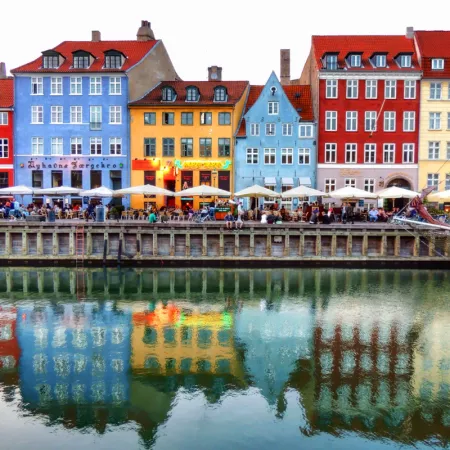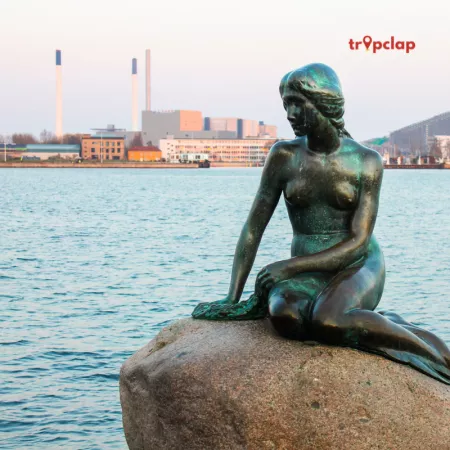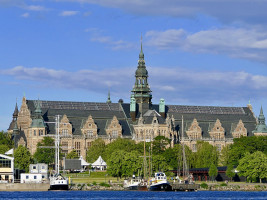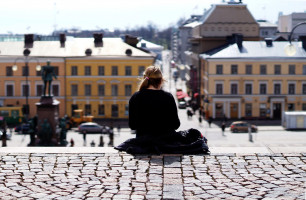
Denmark
Duration
3 to 5 Days
3 to 5 Days
Best time to visit
May-Aug
May-Aug
Theme
Hill Station, Heritage
Hill Station, Heritage
Denmark Travel Guide
Denmark, located in Northern Europe, is a country known for its rich history, stunning landscapes, and vibrant culture. It is famous for being the home of the Vikings, fairy-tale author Hans Christian Andersen, and the iconic Little Mermaid statue in Copenhagen.Top Attractions in Denmark
- Tivoli Gardens
- Nyhavn Harbor
- Kronborg Castle
- Legoland Billund
- Rosenborg Castle
Denmark is Famous for
Known for its fairy-tale charm and innovative design, Denmark is most famous for its happy people and quality of life.Top Attractions in Denmark
- Exploring the colorful streets of Nyhavn
- Visiting the Viking Ship Museum in Roskilde
- Enjoying a bike ride around Copenhagen
- Experiencing the modern architecture of Aarhus
- Relaxing on the sandy beaches of Skagen
What's Great about Travelling to Denmark?
- Scenic beauty and picturesque landscapes
- Rich history and cultural heritage
- Friendly and welcoming locals
- Safe and well-organized transportation system
What's Not So Great about Travelling to Denmark?
- Higher cost of living compared to other European countries
- Weather can be unpredictable, especially in winter
- Limited daylight hours during the winter months
- Language barrier for non-Danish speakers in rural areas
Travel Tips for Denmark
- Ensure to carry some cash as not all places accept credit cards
- Respect the local customs and traditions, such as taking off shoes indoors
- Use public transportation or rent a bike to explore the cities
- Stay updated on weather forecasts and dress accordingly
Important Denmark trip information
- Ideal Duration: A week to 10 days is ideal to explore the major attractions.
- Best Time to Visit: May to September for pleasant weather.
- Nearby Airports and Railway Stations: Copenhagen Airport and Copenhagen Central Station are major entry points.
Top 1 Places to visit in Denmark
Total
7,42,000
*EXCLUDING APPLICABLE TAXES 5.0 Ratings
( 20 Reviews )
( 20 Reviews )
Total
5,98,000
*EXCLUDING APPLICABLE TAXES 5.0 Ratings
( 20 Reviews )
( 20 Reviews )
Per Person
1,83,252
*EXCLUDING APPLICABLE TAXES 4.9 Ratings
( 200 Reviews )
( 200 Reviews )
Per Person
62,932
*EXCLUDING APPLICABLE TAXES 4.9 Ratings
( 200 Reviews )
( 200 Reviews )
Per Person
1,08,089
*EXCLUDING APPLICABLE TAXES 4.9 Ratings
( 200 Reviews )
( 200 Reviews )
Per Person
83,108
*EXCLUDING APPLICABLE TAXES 4.9 Ratings
( 200 Reviews )
( 200 Reviews )
FAQ's on Denmark
Q1: What is the best time to visit Denmark?
The best time to visit Denmark is during the summer months from June to August when the weather is mild and the days are long. This is also when many festivals and outdoor events take place, making it a lively time to explore the country. However, if you prefer fewer crowds and lower prices, consider visiting in the shoulder seasons of spring (April to May) or fall (September to October). Winter can be cold but offers a magical experience, especially during the Christmas season.
Q2: Do I need a visa to travel to Denmark?
Denmark is part of the Schengen Agreement, so visitors from Schengen countries do not need a visa for short stays. Travelers from many other countries, including the US, Canada, Australia, and New Zealand, can also visit Denmark visa-free for up to 90 days. However, it's essential to check the visa requirements based on your nationality and the purpose of your visit before traveling to Denmark.
Q3: What are the must-visit attractions in Denmark?
Denmark is home to iconic attractions such as the Tivoli Gardens in Copenhagen, the colorful Nyhavn waterfront, the historic Rosenborg Castle, and the Viking Ship Museum in Roskilde. Don't miss the chance to explore the fairy-tale-like castles of North Zealand, including Kronborg Castle and Frederiksborg Castle. Nature lovers will enjoy the white cliffs of Møns Klint and the sandy beaches of Skagen. For a cultural experience, visit the ARoS Aarhus Art Museum and the Legoland Billund Resort for family fun.
Q4: Is Denmark a safe place to travel?
Denmark is considered a safe country for travelers, with low crime rates and a stable political environment. However, like any other destination, it's essential to take general precautions such as safeguarding your belongings in crowded areas and being aware of your surroundings, especially at night. While Denmark is generally safe, it's advisable to avoid certain neighborhoods in major cities late at night and follow any local safety advisories during your visit.
Q5: What is the local currency in Denmark and can I use credit cards?
The official currency of Denmark is the Danish Krone (DKK). Credit and debit cards are widely accepted in Denmark, especially in urban areas, shops, restaurants, and hotels. ATMs are also readily available throughout the country for cash withdrawals. It's a good idea to notify your bank before traveling to Denmark to avoid any issues with using your cards abroad. While some places may accept euros, it's recommended to have some Danish Krone for smaller transactions and places that do not accept foreign currency.
Q6: What is the local cuisine like in Denmark?
Danish cuisine is known for its hearty and flavorful dishes, including open-faced sandwiches (smørrebrød), traditional meatballs (frikadeller), and pickled herring. Don't miss out on trying the famous Danish pastries like wienerbrød and æbleskiver, perfect for a sweet treat. Seafood lovers can enjoy fresh fish dishes along the coastal regions, while meat lovers can savor roast pork with crackling (flæskesteg) or the iconic Danish hot dog (pølse). For a true Danish experience, visit local markets for organic produce and artisanal products, and explore the concept of hygge while enjoying a meal at a cozy restaurant.
Q7: What transportation options are available in Denmark?
Denmark offers a well-connected transportation system, including trains, buses, and ferries, making it easy to explore the country. The national rail network provides efficient and comfortable train services between major cities like Copenhagen, Aarhus, and Odense. Buses are a convenient option for traveling to smaller towns and rural areas. In cities like Copenhagen, biking is a popular and eco-friendly way to get around, with bike lanes and rental services widely available. Taxis are also accessible but can be expensive, so consider using ride-sharing services for a more budget-friendly option. Renting a car is ideal for exploring the countryside and coastal regions at your own pace.
Q8: Are there any cultural norms or etiquette I should be aware of when visiting Denmark?
When visiting Denmark, it's essential to respect the local customs and etiquette to have a pleasant experience. Danes value punctuality, so make sure to arrive on time for appointments and social gatherings. Tipping is not obligatory as a service charge is often included in the bill, but rounding up the amount is appreciated for good service. Danish society is egalitarian, so addressing people by their first names and engaging in informal conversations is common. It's also polite to say "thank you" (tak) and "please" (vær så venlig) when interacting with locals. When dining out, keep in mind that it's customary to wait for the host to offer a toast before taking a sip of your drink. Overall, embracing the Danish concept of hygge, which focuses on coziness and enjoying life's simple pleasures, will help you connect with the local culture.
Q9: I am a travel agent. How can I buy travel leads of Denmark?
Register yourself as a travel agent at agents.tripclap.com and then you can buy travel leads to Denmark once your account is approved. For more details contact our support team at +91-8069186564 or support@tripclap.com






